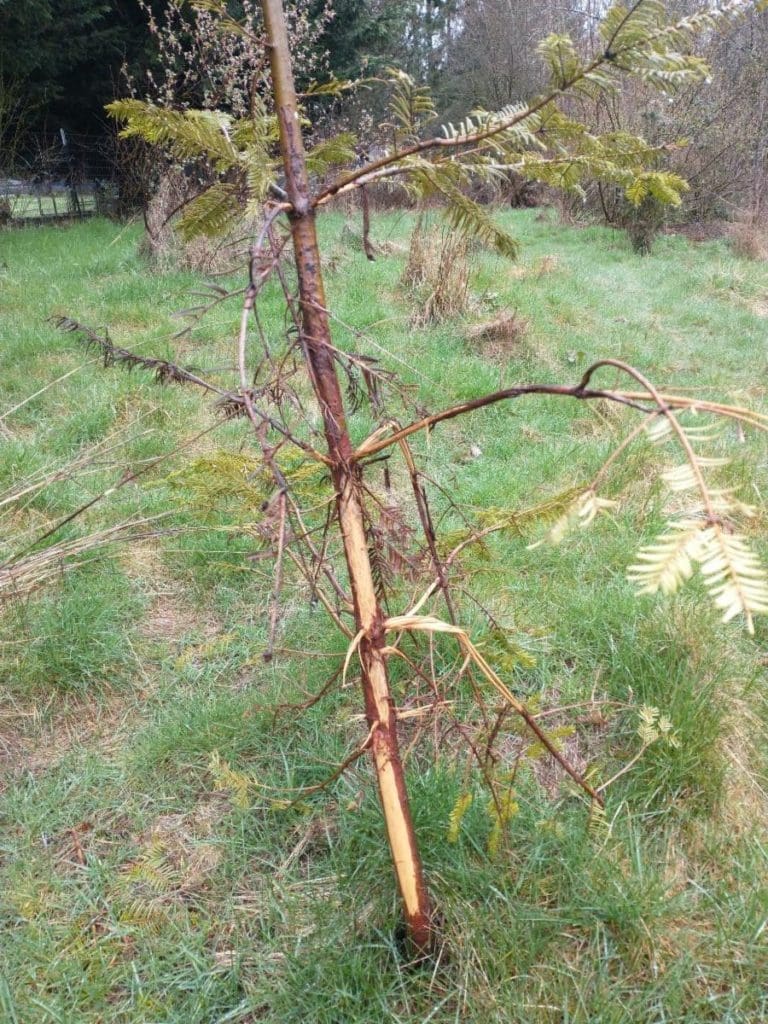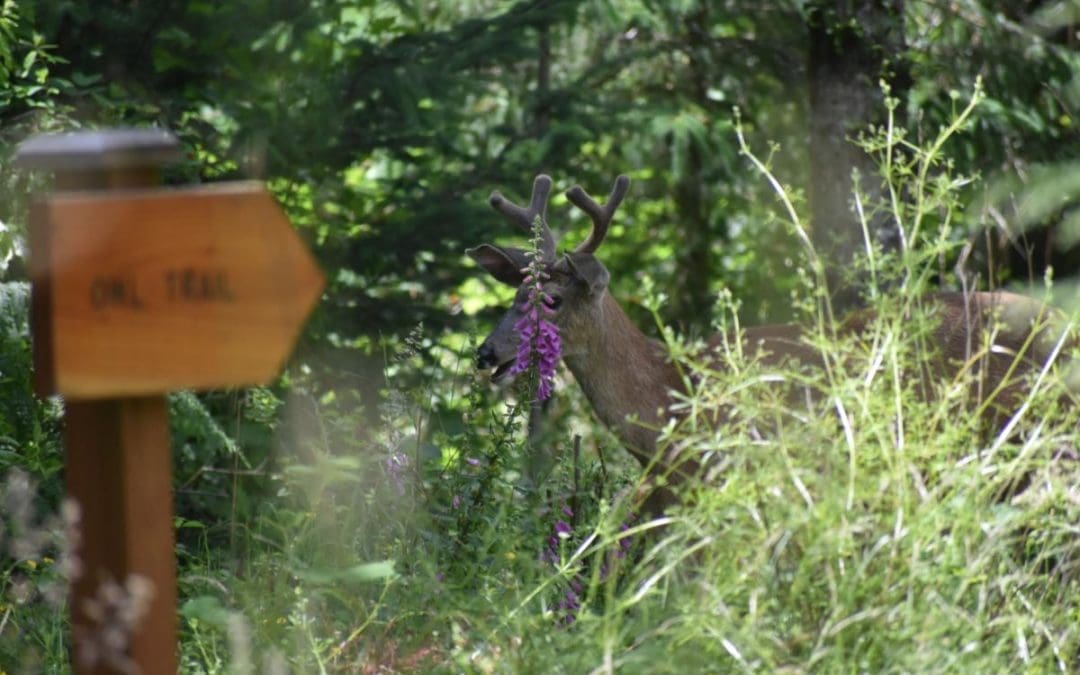Columbian Black-tailed deer (Odocoileus hemionus ssp. Columbianus) and deer rubs
One of SHADOW’s most frequent habitat users, the Columbian Black-tailed deer’s footprints and deer rubs can most often be found in the Uplands and Native Garden habitats. What is a deer rub? We’ll get to that, but first a little about our resident deer.
Columbian Black-tailed deer (Odocoileus hemionus ssp. Columbianus) is a sub-species of mule deer. These cervids (the taxonomic name for the deer family) range from Southern British Columbia to Santa Barbara County in California and as far East as the Cascade and Sierra Nevada Mountains.
These deer primarily graze on plants found on the edges of forested lands, and their diet fluctuates seasonally to take advantage of what plant material is available. During the winter and early spring, they forage on Douglas fir, western red cedar, many species of ferns, salal, other evergreen shrubs, and lichens. During the remainder of the year, you can observe them consuming a varied diet of grasses, berries, fireweed, salmonberry, maple, and fruits such as apples and berries.
Does (female deer) give birth in late May to early June after a six to seven-month gestation and usually produce twin offspring, called fawns. Unlike adult deer, who have active scent glands on their heads, legs, and between their toes, fawns do not emit any scent for the first week of their life. One hypothesis is that the lack of scent protects them from predators while being “parked” by the doe while she forages for food.
Bucks (male deer) begin growing antlers in April and are ready to shed the velvet that encapsulates and feeds the growing bony appendage in August or September. To shed this highly vascularized, nutrient and growth-promoting covering of the antlers, the bucks go to a favored tree or shrub and rub their antlers. It doesn’t take long for them to shed their velvet, usually only 24 hours or so. But shedding velvet is not the only time bucks visit rubs and cervidologists are learning that does visit these rubs too. (Cervidology is the study of the Cervidae family.)

Rubs are a favored tree or shrub that a buck will repeatedly rub his antlers on. This can be for the aforementioned velvet shedding, mock fighting or scent marking, and territorial defense. Being both visual and olfactory “signposts” for other deer, a dominant buck may also use a rub in the presence of other bucks when dominance is being contested. By releasing pheromone-laden sent onto the rub, deer are sending all sorts of olfactory communication to one another. White-tailed deer researcher Karl Miller hypothesizes that dominant bucks’ marking of rubs can “maintain social harmony” in those deer populations. Primer pheromones shared on rubs can help bring does into estrus around the same time and suppress hormones that drive mating behaviors in young bucks.
Rubs can, unfortunately, be very damaging or deadly to trees, especially if they are young or the cambium layer of the tree is rubbed off around the circumference of the tree. Because such rubs prevent the xylem and phloem from carrying nutrients, minerals, and water throughout the tree, rubs can greatly affect a tree’s ability to resist disease, grow, or even survive. Not every tree or shrub is used as a rub and it seems to vary based on the age of the tree and the season. Those trees producing their own volatile smells, like cedars, seem to be favored trees. Also, ones with smoother trunks seem to be preferred over knobby or rough-barked species.
Tree rubs, while a vital part of a healthy ecosystem and functioning deer population in a habitat, can be challenging to restoration efforts. Here at SHADOW, you will see newly planted trees protected with guards to keep deer’s antlers from rubbing off the bark and breaking off too many branches. There are several mature trees sporting active rubs up in the Native Plant Garden along the trail. See if you can find them during your next visit!
Want to know more? Here are a few links:



Recent Comments